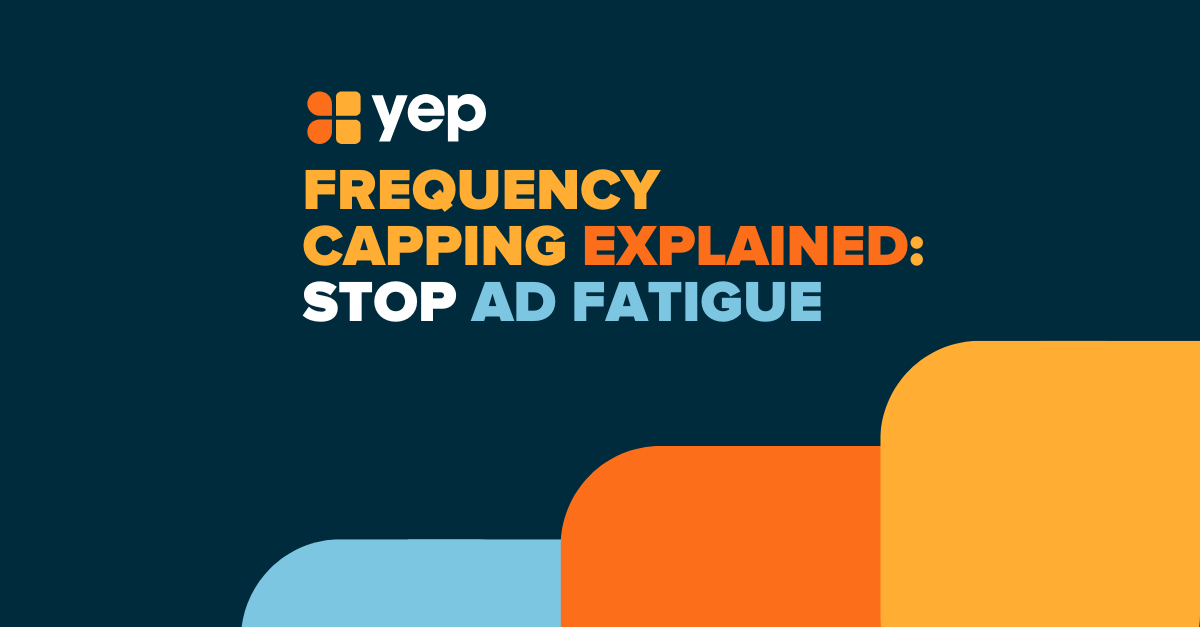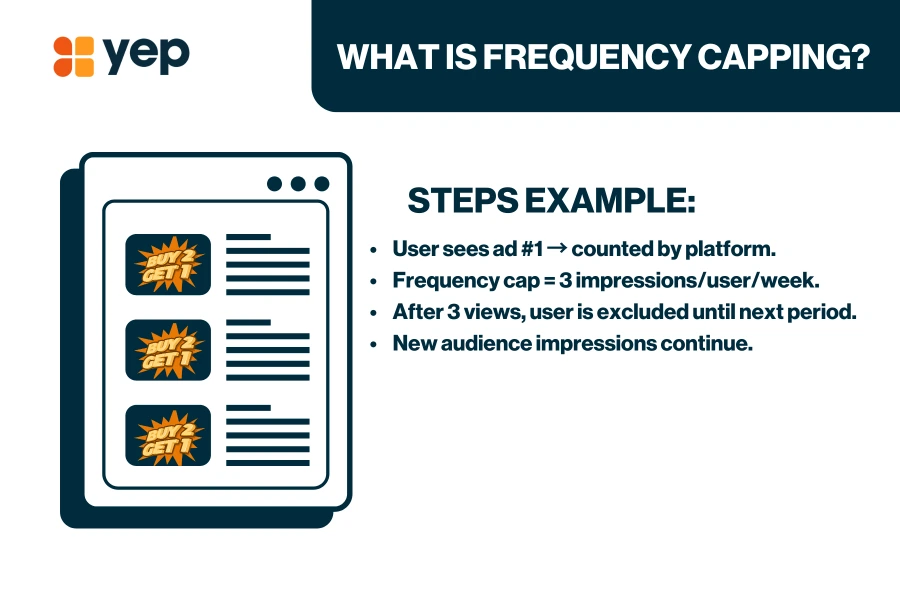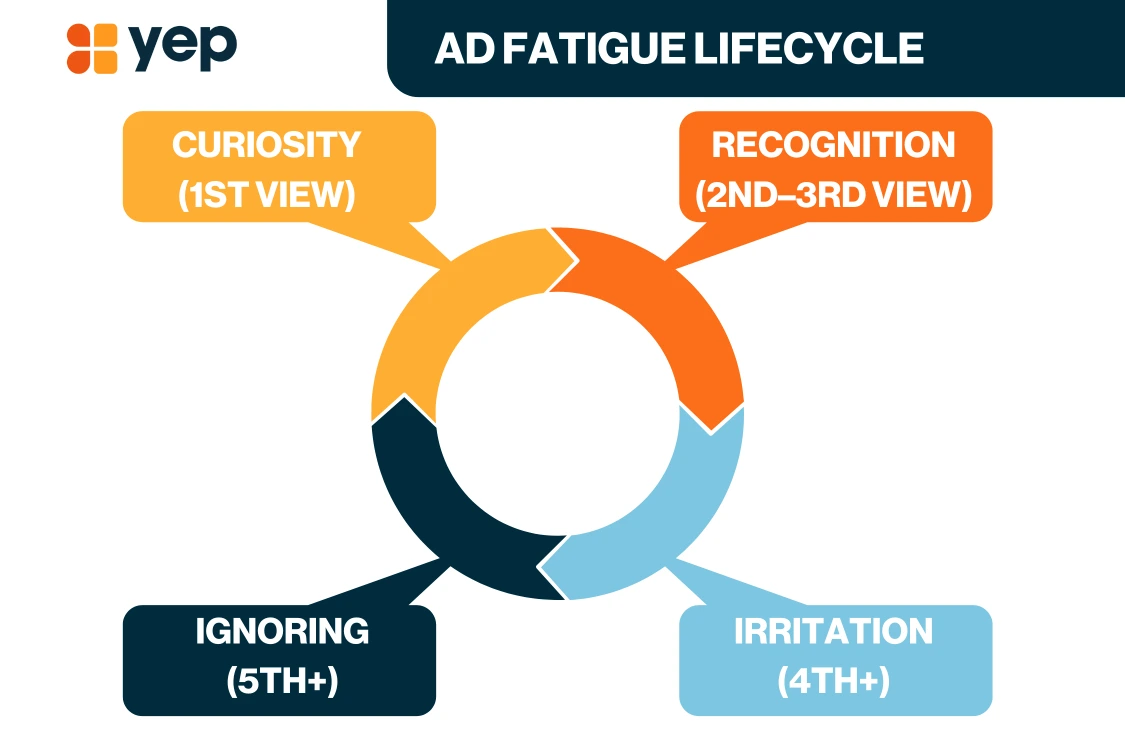
Frequency Capping Explained: Stop Ad Fatigue
You visit one website, scroll through Instagram, open a random app and boom.
The same ad again. And again. And again.
At first, it’s harmless. Then it’s annoying. Then you swear you’ll never buy from that brand just out of spite.
That’s what happens when advertisers skip frequency capping, a simple rule that decides how many times one person sees your ad. It’s one of those behind-the-scenes settings that can make or break your performance campaigns.
Because here’s the thing: showing your ad once isn’t enough. But showing it 20 times? That’s a guaranteed scroll-past. Let’s unpack why frequency capping matters, how to find your sweet spot, and what smart affiliates and brands are doing to balance visibility with sanity.
Основные выводы
- Frequency capping limits how many times a user sees your ad, keeping you memorable, not irritating.
- It boosts ROI by preventing wasted impressions and improving engagement quality.
- The “perfect cap” depends on your audience, channel, and campaign goal.
- In 2025, with the advancement of AI and stricter privacy regulations, mastering frequency control is more crucial than ever.
Оглавление
- What Is Frequency Capping (Really)?
- Why It Matters for Advertisers & Publishers
- How It Works Behind the Scenes
- Finding Your Sweet Spot
- Channel-by-Channel Tips
- Общие ошибки, которых следует избегать
- Заключительные размышления
- Вопросы и ответы
What Is Frequency Capping?
Frequency capping is a control feature in digital advertising that limits the number of times a single user sees your ad within a specific time frame, such as per day, per week, or over the entire campaign.
In simple terms, it tells ad platforms: “Don’t overdo it.”
Without frequency capping, your ad might appear to the same person ten, twenty, or even fifty times, wasting impressions, budget, and patience. With capping, you control exposure, keeping your brand visible just enough to make an impression without crossing into irritation.
This feature is one of the simplest but most powerful tools in performance marketing. It helps advertisers balance reach and relevance, ensuring every impression adds value instead of noise. It’s particularly effective in affiliate and performance campaigns, where every click and conversion counts toward ROI.
When done right, frequency capping transforms your campaigns from “everywhere and annoying” to “consistent, relevant, and memorable.” Users recognize your brand naturally, not because they can’t escape it, but because they’ve seen it at the right time, the right number of times, and in the right context.

That’s the difference between being remembered and being ignored.
Why It Matters for Advertisers & Publishers
Для рекламодателей | Для издателей |
| Without capping, ad fatigue sets in fast. Clicks drop, conversions stall, and users mentally block you out. By limiting exposure, you keep engagement high and costs efficient, meaning you spend less to get better results. | It’s all about user experience. Nobody wants visitors frustrated or bouncing off pages because of repetitive ads. Smart frequency capping helps maintain happy audiences, boosts engagement, and leads to higher eCPMs and better advertiser trust. |
How It Works Behind the Scenes
Here’s how it plays out:
- You set a cap (for example, “3 impressions per user per week”).
- Your ad platform, Google, Meta, or any DSP tracks user exposure through cookies or device IDs.
- Once the limit is hit, your ad takes a break for that person until the next cycle.
You can cap impressions, views, or clicks, depending on the goal.
For instance, a video campaign might cap views at two per user per day, enough to be remembered, not resented.
This balance is what makes frequency capping both a brand builder and a budget saver.

Finding Your Sweet Spot
There’s no universal rule, but here’s what usually works:
A guide from Improvado states that “the optimal ad frequency cap for B2C campaigns generally ranges from 3 to 5 impressions per user per week.
Another source suggests that on Google Display ads, “serving 5 to 7 impressions per week is recommended” for effectiveness in awareness campaigns.
- Awareness campaigns: 5–7 impressions per week build recognition without overload.
- Performance campaigns: 2–3 exposures per week drive peak CTR.
- Retargeting: 1–2 gentle reminders are enough; these users already know you.
If impressions climb while CTR drops, your frequency is too high.
That’s your signal to dial it back or rotate your creative.
Pro tip: Run split tests with different caps to see where engagement peaks your “sweet spot” lives there.
Channel-by-Channel Tips
Every platform has its own rhythm, and so should your ad frequency. What feels “just right” on YouTube might feel like overkill on TikTok. Here’s how to fine-tune your capping strategy by channel:
- Display Ads: Keep it light and strategic, about 1–3 impressions per user per day. Banner fatigue sets in fast since these placements compete with everything else on the screen. If your CTR drops after the second view, it’s time to rotate creatives or try a new format.
- Video Ads: You can go slightly higher, 2–4 views per day, because motion, storytelling, and sound make these more engaging. People remember moving visuals longer, but avoid showing the same video back-to-back. A short cooldown period keeps engagement fresh.
- Social Media: On TikTok, Instagram, and Meta, repetition stands out instantly. Rotate creatives often and A/B test new hooks every few days. Users scroll fast, so subtle variation (new caption, first frame, or voiceover) can reset attention without annoying them.
- Mobile Apps: Frequency capping is crucial here. Mobile users open apps multiple times a day but expect fast, frictionless experiences. Aim for short bursts, not constant repetition. Let your ad appear once every few sessions rather than every time they open the app.
Think of it like this: every platform is a conversation. If you talk too much in one place, people stop listening. But if you show up at the right pace, they’ll keep engaging with your brand naturally.

In Google Ads, set a frequency cap by going to your Display campaign’s Settings → Additional settings → Frequency management, then choose how many times per day, week, or month your ads can show to the same user.
Общие ошибки, которых следует избегать
Here are the biggest pitfalls we see:
- No cap at all: You’ll burn your audience and your budget.
- Same ad creative repeated endlessly: Change visuals or copy every few days.
- Caps too strict: You’ll lose reach and potential conversions.
- Ignoring time gaps: Don’t stack impressions back-to-back; spread them out.
Good capping isn’t about restricting; it’s about respecting your audience’s attention span.

Заключительные размышления
Frequency capping isn’t about showing up less; it’s about showing up smarter. The right cap gives users breathing room while keeping your brand top-of-mind.
In 2025, with consumers more selective and AI ad targeting more precise, respecting frequency isn’t optional; it’s a strategy.
В Yep Ads, we help brands and affiliates hit that perfect balance: maximum visibility without overexposure. Because the smartest campaigns don’t shout, they know exactly when to speak.
Вопросы и ответы
- What is frequency capping?
It’s a setting that limits how many times one user sees your ad within a chosen period, like 3 impressions per week. - Why does it matter?
It prevents ad fatigue, reduces wasted spend, and keeps audiences engaged. - What’s the ideal frequency cap?
It depends on your campaign type, typically between 2–5 impressions per user per week. - Does it apply to video ads too?
Yes, video campaigns often cap by views per day or week to avoid repeat fatigue. - What happens if I don’t cap frequency?
Your audience will tune out faster, your CTR will drop, and you’ll pay more for less engagement.
